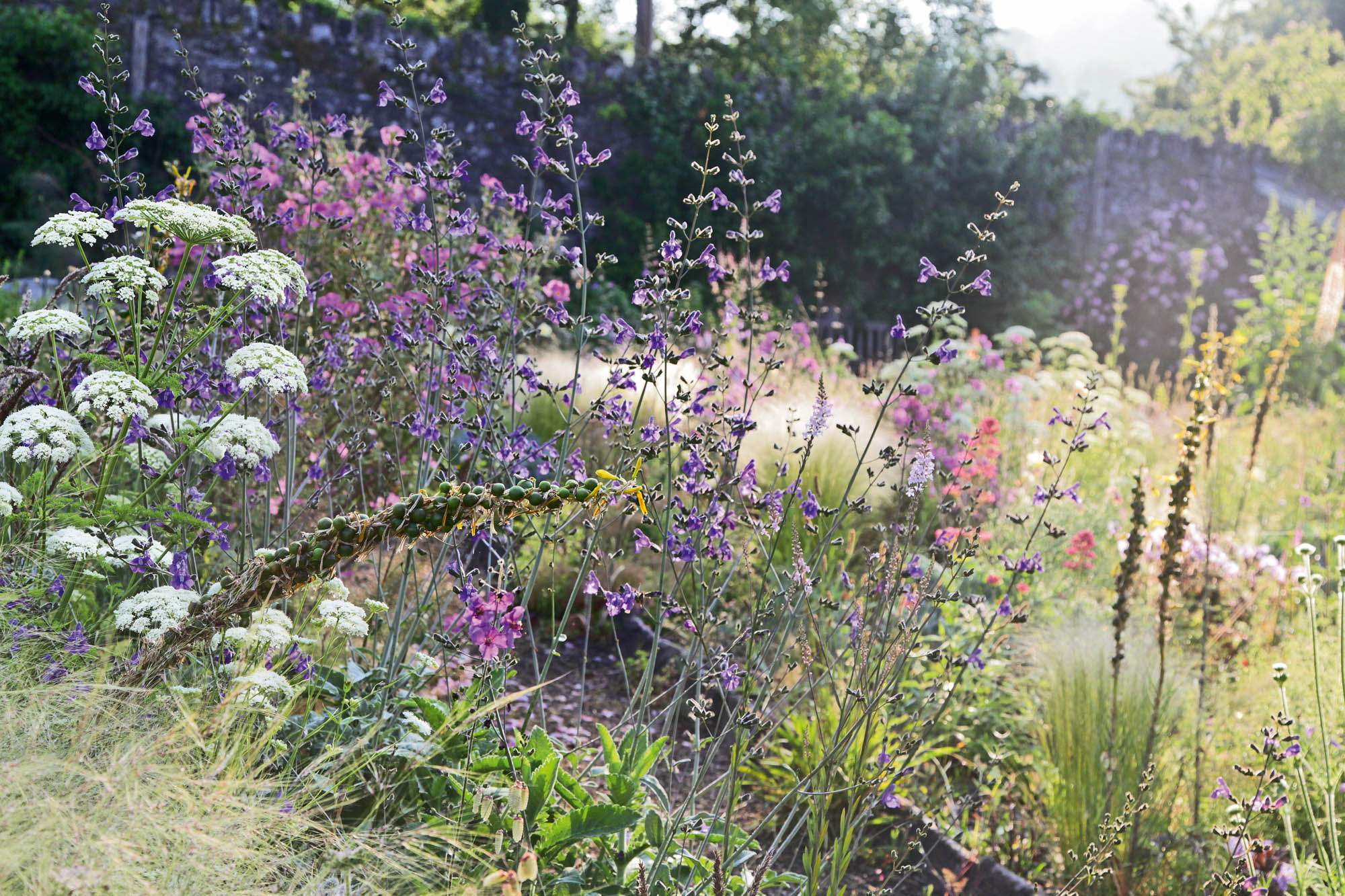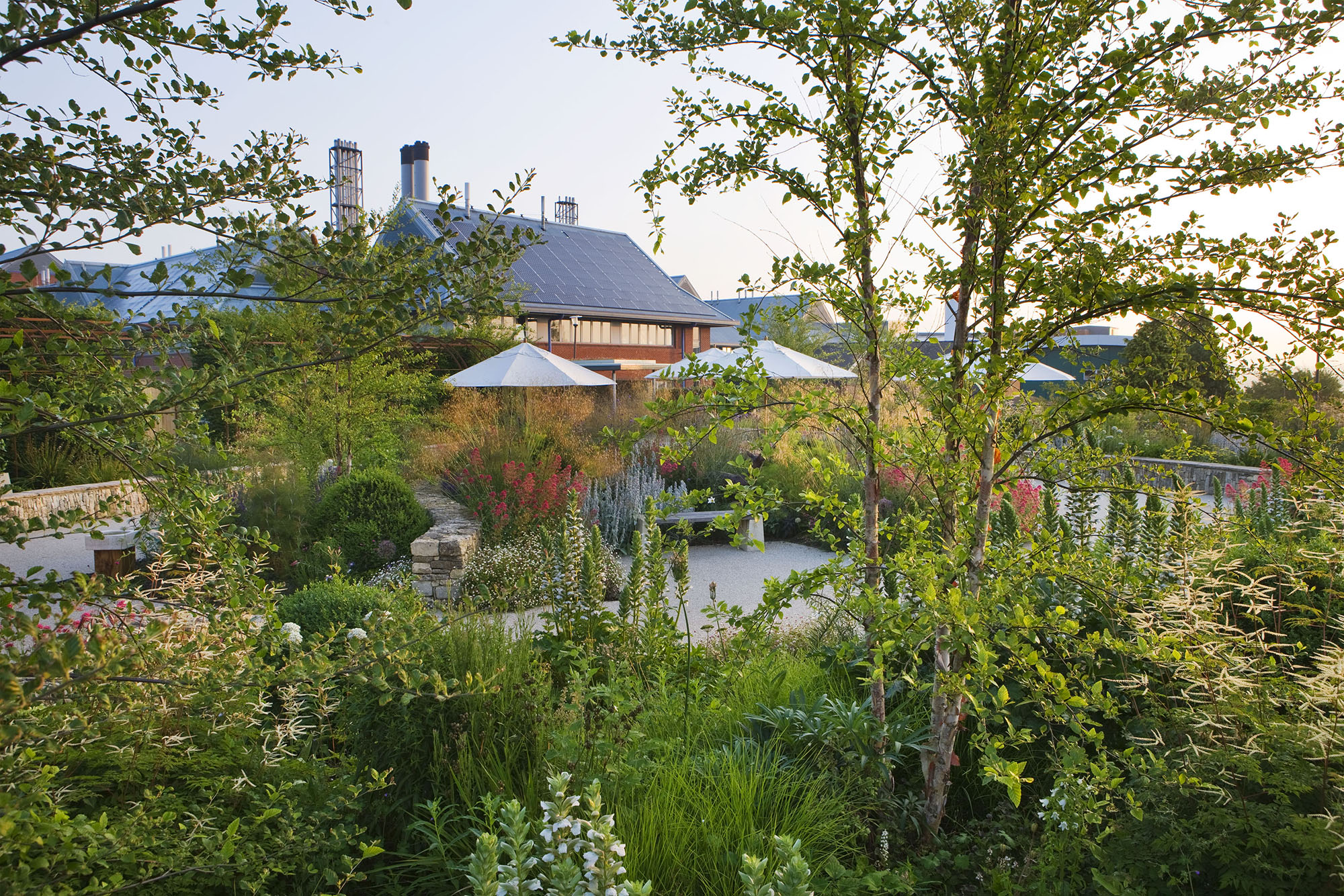Sarah Price, one of Britain's great garden designers, takes Country Life round her own garden
Close artistic observation combined with a deep horticultural intelligence has made Sarah Price one of the finest garden designers today. Tilly Ware visits her at home in Monmouthshire, where she is experimenting to magical effect to create 'a level of harmony that pins you to the spot'. Photographs by Sarah Price.

The best gardening is experimental, as well as ephemeral. Designer Sarah Price’s garden, tucked into the shadow of Sugar Loaf mountain in Abergavenny, has these qualities in profusion. Ms Price moved to The Chain, a large Victorian house divided into flats by her grandparents, in 2013.
Her walled garden is a sheltered, triangular slice leading east from the house, its high walls in the same greyish-pink stone. This part has been gardened productively, with vegetables, fruit and flowers, since the 1870s; the original greenhouse stretches down the north side, the deep staging crammed with cucumbers and grapevines clambering on the pink, lime-washed walls. At the furthest corner, a tunnel dips under the lane that borders the east wall, emerging into a wilder grassy orchard. The River Cibi rushes along the south perimeter and a fern-strewn path by the water’s edge circles back to the front lawns. The site covers two acres and Ms Price has plans for all of it, but the walled garden has so far seen the biggest transformation.
Ms Price tried annuals and dahlias at first, but realised that ‘to look good, it needed much more regular care: the seed bank was huge with a lot of weeds’. She removed the first eight inches of topsoil and filled it with recycled sand, gravel and shingle, a weed-free substrate that could grow the sun-loving perennials she desired. The existing gravel paths allowed for walking amid the planting and Ms Price added criss-crossing tracks into the beds.
She used different mediums for trialling and observing the effects — ‘as a designer, you need an experimental aspect’ with pebbles around succulent sea kale or sand sweeping the feet of Ligustrum lucidum. Some paths have developed their own ecosystems, such as the self-sown mix of bird’s-foot trefoil, Euphorbia myrsinites and alchemilla by the old bothy.

With a hungry and free-draining soil, Ms Price could try plants that experience had taught her were ‘too big for an average border, but won’t flop when grown hard in gravel’. The Siberian spurge, Euphorbia seguieriana subsp. niciciana, is one of these, producing handsome clumps of acid-yellow flowers during late spring and summer. There are seven Euphorbia species in the garden, which form a structural backbone and carry the successional flowering, from early E. cyparissias ‘Fens Ruby’ to the autumn-flowering E. margalidiana. More sub-shrubs, such as Santolina rosmarinifolia and various cistus, contribute domes of silver.
Grasses are everywhere: fountains of Stipa splendens with silvery panicles that capture the east light, fresh green Melica ciliata and buff-white pipe cleaners of Pennisetum macrourum are only a few of the species that Ms Price has skilfully stitched in. Their silky movement amplifies the deeply textural delicacy of this garden, where everything feels gossamer light. Nothing is brash, nothing is over-pumped. It couldn’t be further from the orderly rows and fattened cauliflowers of a classic kitchen garden. Here, the craft of gardening is almost hidden, as if a gorgeous group of plants colonised the contained space simply to play together.
Ms Price grows mainly species plants or hybrids that remain close to their wild parents. ‘Initially in my career, I tended to look at books,’ she remembers, ‘but then I looked at habitats—my inspiration now is driving past roadside flowers.’ She has a strong visual memory and can remember colours or forms, such as ‘the burnt-out grasses with the pink Malva sylvestris—I can see it might create an incredible scheme’. All sorts of unexpected wild places inform her work: finding ‘ladies bedstraw and different sorts of knapweeds and the redness of herb robert when grown hard’.
Exquisite houses, the beauty of Nature, and how to get the most from your life, straight to your inbox.
Her close observation is coupled with an exceptional artistic intuition when combining plants. She achieves a level of harmony that pins you to the spot, trying to fathom how it has been done and keenly wishing you could do it, too. The rhythm of her planting is mesmerising: she advises ‘keying in to the random patterns, creating the gaps and the repetition’. She is expert at layering heights, wild parsnips entwining with euphorbias giving ‘a similar effect at a different level’. Colours coalesce into a haze of soft blues, smoky purples and the best shades of yellow, with pointillist spots of intense pink or orange.

The use of wildflowers is joyous: a wispy Senecio polyodon (pink ragwort), with sweet daisy-like flowers, airily scrabbles through its neighbours as the wiry stems of the spreading bellflower, Campanula patula, branches out with violet-blue stars. Rising spires from tall, ethereal plants produce knockout seedheads: speckled clouds of Patrinia monandra, fat knobbly batons nod from spent Asphodeline lutea.
You realise that every plant, from infancy to senescence, has an arrestingly beautiful form. One of the loveliest is Oenothera stricta ‘Sulphurea’, with maroon-flushed stems that balance alternate leaf buds on each side. The pale-primrose blooms with dusky-violet throats last all summer, fading to peach. ‘In a border, it looks crammed,’ notices Ms Price, ‘but here it has enough space and heat.’ Bulbs also adore the warm, sandy conditions; she has experimented with Eremurus ‘Cleopatra’ and ‘Pink Romance’, Tulipa turkestanica, fritillaries and masses of self-seeded Nectarascordum siculum and Gladiolus byzantinus.
Ms Price always looks closely and thinks deeply; her garden compels you to do the same. It is a clear expression of her serene, sensitive approach to horticulture. ‘I’m practising a quieter way of gardening,’ Ms Price acknowledges, her young family and demanding career balanced with a private space that has ‘evolved from snatched time’. Perhaps that has only added to its exquisite lightness of touch.

Horatio's Garden: The life-changing gardens that 'give you hope and take away the darkness'
George Plumptre visits the extraordinary Horatio’s Garden in Salisbury, an 'inspirational place' that shows the power of gardening.
Chelsea Flower Show 2023: See all the gold medallists
See all the gold medal winners from the 2023 Chelsea Flower Show, and find out who else won awards at
Tilly Ware is a gardener and gardening writer.